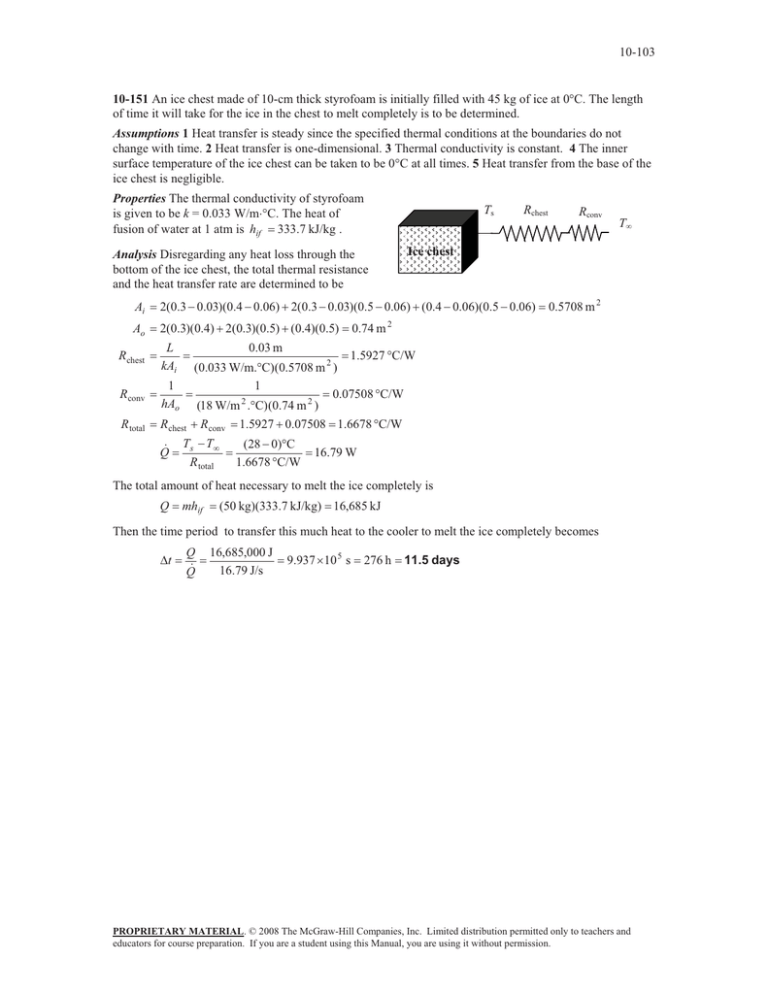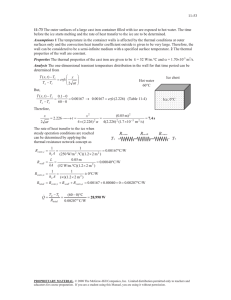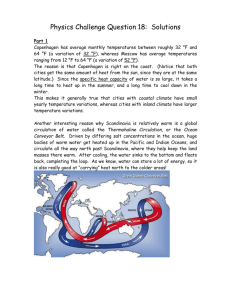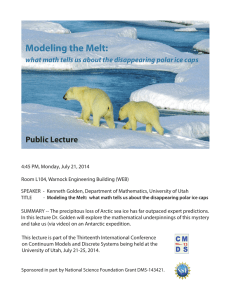10-103 of time it will take for the ice in the... change with time. 10-151
advertisement

10-103 10-151 An ice chest made of 10-cm thick styrofoam is initially filled with 45 kg of ice at 0qC. The length of time it will take for the ice in the chest to melt completely is to be determined. Assumptions 1 Heat transfer is steady since the specified thermal conditions at the boundaries do not change with time. 2 Heat transfer is one-dimensional. 3 Thermal conductivity is constant. 4 The inner surface temperature of the ice chest can be taken to be 0qC at all times. 5 Heat transfer from the base of the ice chest is negligible. Properties The thermal conductivity of styrofoam is given to be k = 0.033 W/m°C. The heat of fusion of water at 1 atm is hif 333.7 kJ/kg . Analysis Disregarding any heat loss through the bottom of the ice chest, the total thermal resistance and the heat transfer rate are determined to be Ts Rchest 2(0.3 0.03)(0.4 0.06) 2(0.3 0.03)(0.5 0.06) (0.4 0.06)(0.5 0.06) Ao 2(0.3)(0.4) 2(0.3)(0.5) (0.4)(0.5) L kAi Rconv 1 hAo R total Rchest Q Tf Ice chest Ai Rchest Rconv 0.5708 m 2 0.74 m 2 0.03 m 1.5927 qC/W (0.033 W/m.qC)(0.5708 m 2 ) 1 0.07508 qC/W 2 (18 W/m .qC)(0.74 m 2 ) Rconv 1.5927 0.07508 1.6678 qC/W T s Tf R total (28 0)qC 1.6678 qC/W 16.79 W The total amount of heat necessary to melt the ice completely is Q mhif (50 kg)(333.7 kJ/kg) 16,685 kJ Then the time period to transfer this much heat to the cooler to melt the ice completely becomes 't Q Q 16,685,000 J 16.79 J/s 9.937 u 10 5 s 276 h 11.5 days PROPRIETARY MATERIAL. © 2008 The McGraw-Hill Companies, Inc. Limited distribution permitted only to teachers and educators for course preparation. If you are a student using this Manual, you are using it without permission.






